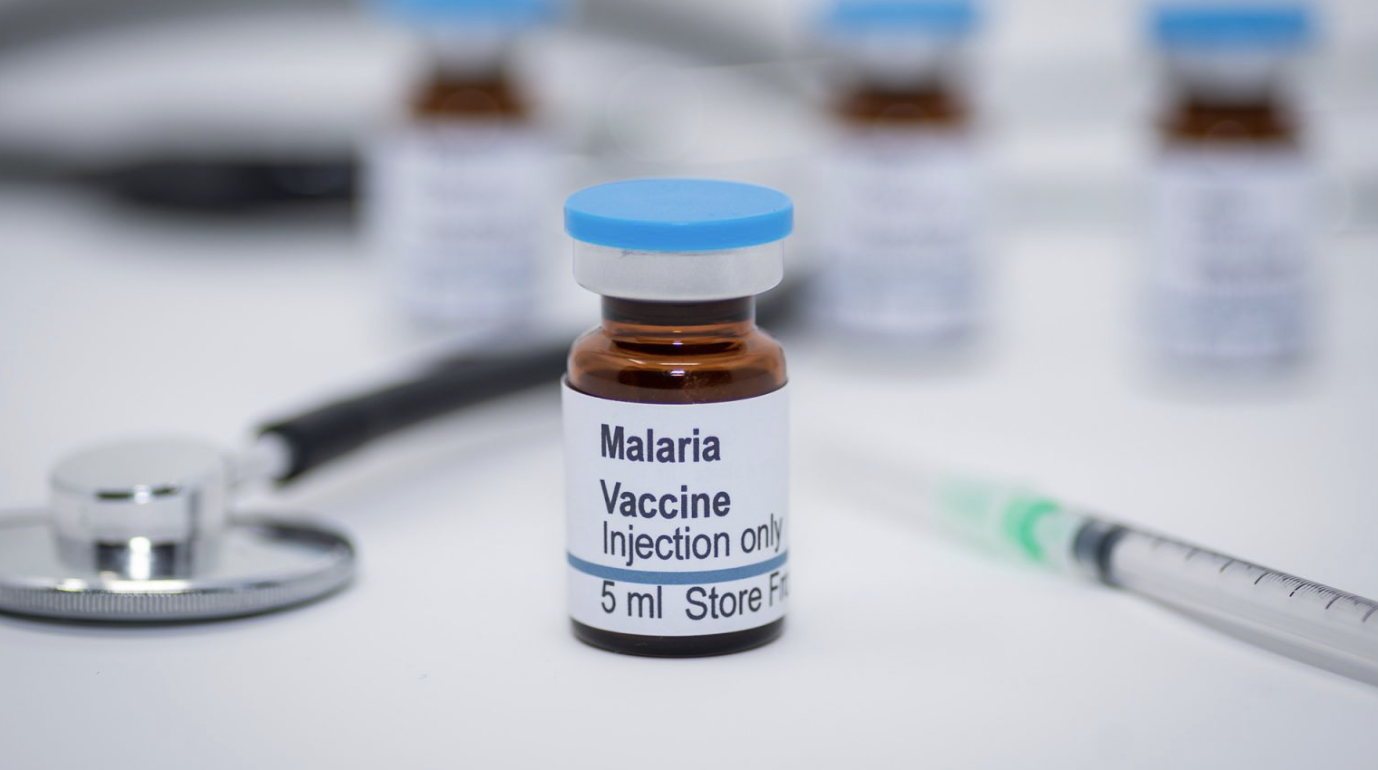On October 6, 2021, the World Health Organization (WHO) announced a huge win in the ongoing fight against malaria. In a press release, WHO recommended a vaccine called RTS,S for children in places with high risk of malaria infection, a step that could have a tremendous impact on overall public health and malaria survival rates.
Malaria is caused by a parasite transmitted by mosquitoes. Dr. Johanna Daily, an Infectious Diseases doctor at Montefiore and the Albert Einstein College of Medicine who studies malaria and has worked in field studies, said “Malaria has many different life-cycle stages, which is why vaccine development has been a challenge. The present vaccine targets the skin stage where malaria is transmitted from a female anopheles mosquito who takes a blood meal for her eggs and incidentally injects a malaria sporozoite, which is the beginning of the infectious state in humans.”
A sporozoite is the form of a parasite in the first part of the infectious state.
Malaria typically causes flu-like symptoms, but it can be life threatening, especially to children under 5. The highest concentration of malaria cases occur in the sub-Saharan region of Africa.
According to Dr. S. Patrick Kachur, a public health physician at the Mailman School of Public Health who serves on the World Health Organization’s Malaria Policy Advisory Group, “Malaria parasites can find about 50 different ways to infect human blood cells. If our immune system or a vaccine can only prevent one of those, then the vaccine will not be very efficacious.”
Having a vaccine against a parasite is a huge medical breakthrough, and RTS,S happens to be the first of its kind. Dr. Paul Church, Biology teacher and Science Department head said “This is huge. Lately, vaccines have become politicized. With any scientific discovery or new development, there are always pros and cons. In the case of vaccines, in every single vaccine that has been approved the pros so greatly outweigh the cons that, from a scientific perspective, there’s no question that the vaccine should be implemented.”
According to Daily, “Vaccines are a 100-year old technology. Older vaccines would contain the whole pathogen and then if you became infected with that pathogen your immune system, constituted by antibodies, B and T cells are already present and poised to quickly control the infection and prevent disease.”
The first vaccine was developed in the 1790s by Edward Jenner, who created protection against smallpox using cowpox pustules. Vaccine technology has since been developed to protect against many diseases from Polio to Tuberculosis to Tetanus. All other approved vaccines up to this point have defended against simpler invaders than Malaria.
However, “Because it is such a complex organism as compared to a virus or bacteria, it has taken a long time to identify how to develop an effective vaccine,” Kachur noted.
In contrast to the relatively quick production and manufacturing of the COVID-19 vaccine, this malaria vaccine has been going through rigorous testing and development for decades. Kachur said, “This particular vaccine for malaria has been in development for about 30 years. It went through a lot of different stages of laboratory research and preclinical studies. In about 2014, the vaccine finished its really important stage of experimental trials in African children in 9 different countries. In that study, the vaccine was found to be about 30-40% efficacious at preventing severe malaria disease and hospitalization.”
“Although 30-40% efficacy doesn’t sound all that effective in comparison to the 90% or more effectiveness of COVID vaccines and other vaccines, because the burden of malaria is so high and it kills almost a quarter of a million children every year, that efficacy could be really life-saving,” he added.
Dr. Church also noted the contrast between the two groundbreaking vaccines. “This is a different type of pathogen. We have been developing vaccines against viruses for many years. COVID was just another virus. It is true that the RNA vaccine was a new technology, but the background technology was already developed.”
Additionally, the time it takes to develop vaccines can be influenced by the monetary incentives involved. “Part of it has to do with the profit margin, and who the target audience is. We are talking about children in sub-Saharan Africa; is that a top priority for people looking to make money?”
Funding for this particular vaccine came from a variety of public health organizations and non-governmental organizations (NGOs), but, as the WHO website put it, “catalytic” contributions came from the Bill & Melinda Gates Foundation.
This vaccine consists of its individual components as well as an adjuvant, which prompts the immune response. This type of vaccine technology is not new. According to Daily, “There were scientists going back to 1954 who looked at the surface of the sporozoite, the “coat”, and focused on one small part of the protein sequence. They knew that the immune system recognized this part of the sequence which is called an epitope. They mixed this peptide along with adjuvants to induce a malaria-specific immune response.”
“There have been multiple versions of the RTS,S that have been tested, with each version containing a more potent adjuvant to allow for a more robust and protective immune response,” she continued.
Once the vaccine had been developed, it moved into clinical trials to test its safety, and then efficacy. Dr. Kachur noted some early concerns in the clinical trials. “There were some small indications of safety issues early on. For example, it wasn’t clear whether children who got the vaccine may have been slightly more likely to develop meningitis or whether young girls who got the vaccine might have been slightly more likely to die than young boys. For the last five years the WHO has taken a much larger set of vaccinations, vaccinating nearly a million children, and carefully looked at whether these risks existed. What happened recently was that the WHO looked at the data and concluded that there was no evidence of extra risk of meningitis or death. That cleared the way for the WHO to recommend that this vaccine could be more widely used in African countries.”
Dr. Church emphasized that this process is incredibly rigorous and that the WHO would not approve a new vaccine without confirmation of its legitimacy. “This is a new vaccine, but it has been piloted on close to a million kids already. Before any vaccine gets approved it goes through so many hoops and levels of red tape.”
From the last trial, a pilot program, over 800,000 children were vaccinated, an extraordinary number that suggests future successes in this program. Daily said, “In the last clinical trial, the WHO studied the efficacy when the vaccine was administered in clinics where childhood vaccines are routinely given, in three African countries, to see if under these “real life” conditions the vaccine provides acceptable levels of protection. It did, so the WHO is now recommending widespread use of the malaria vaccine among children in sub-Saharan Africa.”
The vaccine also has very few mild side effects, including injection site pain and fever. “The last thing that any vaccine-maker wants is for their vaccine to cause a horrible side effect. Let’s face it: the makers of vaccines are not in this out of the kindness of their hearts; they’re in this for the money. Nothing could be more disastrous for their bottom line than if one of their vaccines caused some sort of horrible death or debilitating illness. In the end, that benefits all of us,” said Dr. Church.
Despite these successes, Daily is still hopeful that there will be further improvements. “There are four booster shots and the efficacy wanes. I am feeling happy about this breakthrough, and I feel that the next generation of a malaria vaccine will need higher efficacy and longevity of protection.” However, this may be difficult to achieve due to the complexity of the parasite.“The problem with parasites is that they love living in us because they’re living off of us, as we are full of nutrients and provide a life sustaining environment for them, our immune system does recognize them as foreign, however, so they keep changing their surface protein sequences, to escape our immune system, As the vaccine is only targeting one sequence, some malaria parasites with a variant sequence will not be recognized and removed, and thus are resistant to the vaccine.”
Daily also noted that there are many other vaccines in this pipeline, including vaccines aimed at targeting transmission and malaria in the blood stages. “One innovation would be to have a vaccine that induces an immune response to recognize protein sequence variation, and/or multiple stages of the parasite.”
Kachur added that the success of this program has left himself and his colleagues optimistic about the future. “In its delivery, I think there have been a few things that we have been encouraged about on the advisory group of the WHO. One of those is that this vaccine can largely be delivered alongside other childhood vaccines.”
One of the most controversial aspects of the widespread efforts to vaccinate the worldwide and national populations against COVID-19 has been achieving equitable access to vaccines in lower-income areas. Kachur is hopeful that the distribution of this vaccine will be more equitable given the nature of this program. “There have been a lot of efforts to make childhood vaccines as available and equitable as possible, so we are starting from a good place though there certainly are inequities.”
Much like the importance of continuing to pay attention to safety precautions such as social distancing, sanitizing and masking after COVID-19 vaccination, it will be important to continue alternative measures to prevent severe malaria infection. “All of our tools are important. To get the best protection we need to utilize as many as is practical and make sense, particularly when you have tools like a vaccine and a mosquito net, that work in completely different and independent ways. If people have access and ability to utilize both of them we will be able to reduce the number of children who get malaria illness and die too young,” said Kachur.
Daily also emphasized this sentiment. “With such low efficacy, you have to maintain other antimalarial interventions. For example, children that are in high transmission are provided preventative antimalarials so they have an antimalarial blood level in their body when they get bitten. This is called seasonal prophylaxis. Once pregnant women enter the second trimester we give them antimalarials because they can get malaria which infects the placenta and can cause the loss of the pregnancy.”
“We should continue high transmission seasonal prophylaxis, insecticide-treated bed nets to decrease mosquito bites, and spraying of insecticides. Spraying has had a major impact on malaria transmission in individual homes and communities,” she continued.
It will be important to use as many preventative measures as possible to have the most success. The new wave of protection against parasites is here, and it will be exciting to watch this vaccine and future vaccines against malaria and other parasites continue to improve.






